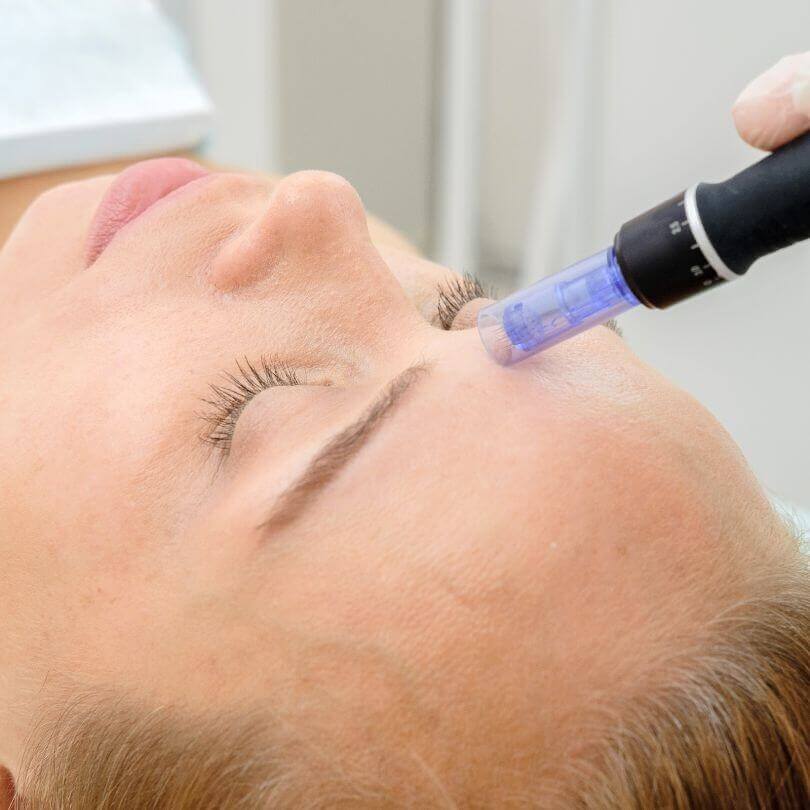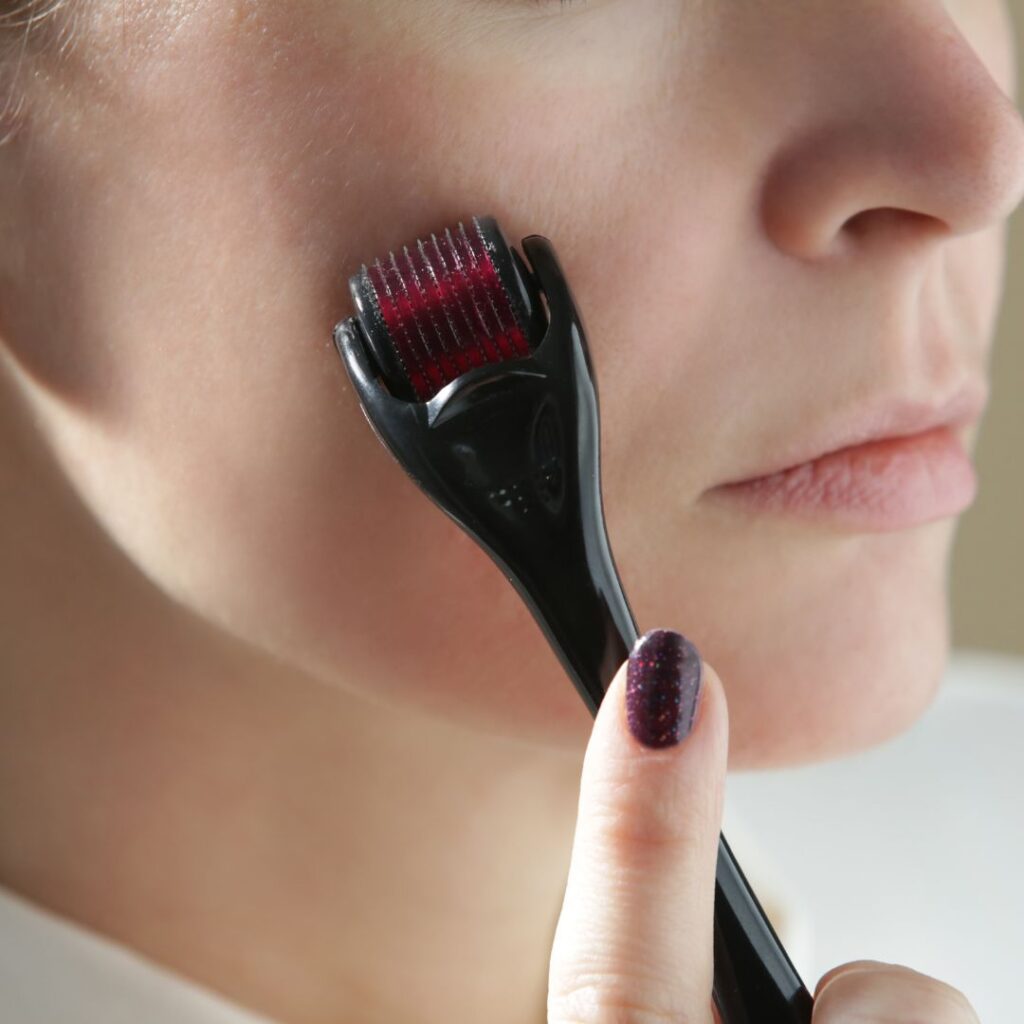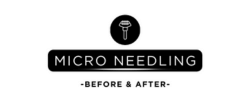In the realm of skin rejuvenation, two popular treatments have emerged as frontrunners: microchanneling and microneedling. While both methods aim to improve the appearance of the skin, they differ in their approach and results. Microchanneling utilizes a specialized device to create tiny channels in the skin, allowing for better absorption of serums and triggering collagen production. On the other hand, microneedling employs small needles to puncture the skin, stimulating the body’s natural healing response and promoting smoother, more youthful-looking skin. Understanding the nuances and benefits of each technique is crucial in determining the best treatment for your individual needs.
Definition
Microchanneling
Microchanneling is a non-invasive cosmetic procedure that involves creating tiny channels or microchannels in the skin to enhance the penetration and effectiveness of topical skincare products. These microchannels are created using a special device with small needles that gently puncture the skin, stimulating the body’s natural healing response and promoting collagen production.
Microneedling
Microneedling, also known as collagen induction therapy, is a minimally invasive cosmetic procedure that involves using a pen-like device with fine needles to create tiny puncture wounds in the skin. These controlled injuries stimulate collagen production and promote skin rejuvenation, treating various skin concerns such as wrinkles, fine lines, scars, and hyperpigmentation.
Procedure
Microchanneling
During a microchanneling procedure, the skin is thoroughly cleansed and prepared. A topical numbing cream may be applied to minimize any discomfort. The microchanneling device is then gently pressed onto the skin, creating microchannels without causing damage to the surrounding tissue. These microchannels allow for increased absorption of specialized serums or skincare products, delivering them directly to the deeper layers of the skin where they can be most effective.
Microneedling
The microneedling procedure begins with the application of a numbing cream to ensure comfort during the treatment. The microneedling device, equipped with a cluster of fine needles, is then rolled or pressed onto the skin, creating controlled puncture wounds. These small injuries trigger the body’s natural healing process, stimulating the production of collagen and elastin. The procedure is typically performed by a trained skincare professional.

Tools Used
Microchanneling
Microchanneling devices typically consist of a pen-like device with multiple fine needle cartridges. These needles can range in length depending on the desired treatment depth. The devices are designed to create precise and controlled microchannels in the skin, allowing for easy and efficient absorption of topical skincare products.
Microneedling
Microneedling devices vary in design, but they generally consist of a handheld device with a roller or a set of needles. The needles can be either fixed or adjustable in length, allowing for customization based on the treatment area and desired depth of penetration. Some advanced microneedling devices also incorporate technologies such as radiofrequency or LED lights for enhanced results.
Treatment Areas
Microchanneling
Microchanneling can be performed on various areas of the body, including the face, neck, décolleté, hands, and even the scalp. This versatility makes it suitable for addressing a wide range of skin concerns, such as fine lines, wrinkles, acne scars, sun damage, and uneven skin tone or texture.
Microneedling
Microneedling can also be used on multiple areas of the body, including the face, neck, hands, and body. It is especially effective for treating concerns like fine lines, wrinkles, acne scars, stretch marks, and age spots.

Depth of Needle Penetration
Microchanneling
Microchanneling devices offer adjustable needle depths, allowing skincare professionals to customize the treatment based on individual needs. The needle lengths typically range from 0.5mm to 3.0mm, ensuring precise targeting of different skin layers. Deeper needle penetration may be suitable for targeting scars or promoting maximum collagen production.
Microneedling
The depth of needle penetration in microneedling also varies, typically ranging from 0.5mm to 2.5mm. The chosen needle length depends on the treatment area and the specific skin concern being addressed. Deeper needle penetration is often utilized to target deeper skin layers, such as for the treatment of acne scars or skin tightening.
Collagen Production
Microchanneling
Microchanneling stimulates collagen production by triggering the body’s natural healing response. The microchannels created during the procedure prompt the release of growth factors, signaling the production of new collagen and elastin fibers. This increase in collagen helps to improve skin elasticity, firmness, and overall appearance.
Microneedling
Microneedling is known for its ability to stimulate collagen production. The controlled puncture wounds made by the microneedling device activate the body’s wound healing process, which includes the production of collagen. This increase in collagen helps to smooth out fine lines and wrinkles, improve skin texture and tone, and diminish the appearance of scars.
Treatment Results
Microchanneling
Microchanneling treatments offer a range of potential results, depending on the specific skincare products used and the individual’s skin concerns. Some common benefits include improved skin texture and tone, reduced appearance of fine lines and wrinkles, diminished acne scars, and overall skin rejuvenation. Multiple treatments may be necessary to achieve optimal results.
Microneedling
Microneedling can deliver noticeable results in skin rejuvenation. Over time, the increased collagen production helps to reduce the appearance of fine lines and wrinkles, improve skin texture, minimize the appearance of scars and stretch marks, and enhance overall skin quality. A series of treatments, spaced several weeks apart, is usually recommended for the best outcomes.
Downtime and Recovery
Microchanneling
Microchanneling is a minimally invasive procedure with minimal downtime. Following the treatment, the skin may appear slightly red or flushed, similar to a mild sunburn. This redness typically subsides within a few hours to a couple of days. Patients can resume normal activities immediately after the treatment, although it is important to follow any specific aftercare instructions provided by the skincare professional.
Microneedling
While the downtime associated with microneedling varies from person to person, it is generally minimal. After the treatment, the skin may appear slightly red and feel sensitive, similar to a mild sunburn. This redness typically subsides within a day or two. It is advisable to avoid direct sun exposure and apply sunscreen following the treatment. Some minor swelling or bruising may also occur but typically resolves within a few days.
Recommended Candidates
Microchanneling
Microchanneling is suitable for individuals looking to improve the texture, tone, and appearance of their skin. It can be used on all skin types and is an excellent option for those who prefer non-invasive treatments. It is particularly beneficial for those with fine lines and wrinkles, acne scars, sun-damaged skin, or uneven pigmentation.
Microneedling
Microneedling is a versatile treatment suitable for most skin types. It is beneficial for individuals looking to address aging concerns such as fine lines, wrinkles, and sagging skin, as well as those with acne scars, stretch marks, or hyperpigmentation. It is important to consult with a skincare professional to determine if microneedling is the right treatment option for specific skin concerns.
Cost
Microchanneling
The cost of microchanneling treatments varies depending on various factors, including the location, the experience of the skincare professional, the number of treatments required, and any additional products or serums used during the procedure. On average, a single microchanneling treatment can range from $200 to $500.
Microneedling
The cost of microneedling treatments also varies depending on factors such as location, the reputation of the skincare professional, and the number of sessions required. On average, a single microneedling session can range from $200 to $700. It is essential to discuss pricing and any package deals with the skincare professional during the initial consultation.
In conclusion, both microchanneling and microneedling are effective cosmetic procedures that can help improve various skin concerns. While microchanneling focuses on creating microchannels for improved product absorption, microneedling primarily promotes collagen production for overall skin rejuvenation. Consulting with a skincare professional will ensure the selection of the most appropriate treatment for individual needs and desires.

